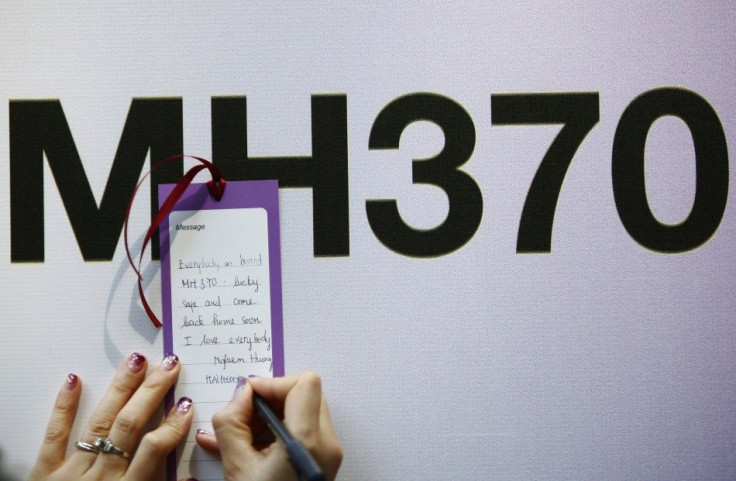Malaysian Airlines Flight MH370: U.S. Official Says Plane Sent Signals to Satellite 4 Hours After It Went Missing

Four hours after the Malaysian Airlines Flight MH370 went missing, the plane has reportedly sent signals to a satellite. According to a U.S. official who asked not to be named, the signals could have meant the Malaysian Airlines plan was still in the air for hundreds of kilometres or more.
It is now 6 days since the aircraft carrying 239 people went missing. Malaysian authorities have decided to expand their search to cover the Indian Ocean as the Malaysian Airlines Flight MH370 plane may have flown in that direction several hours after its last contact with ground personnel. The aircraft went off the radar on route to Beijiing from Kuala Lumpur.
Clues to the whereabouts of the missing Malaysian Airlines Flight MH370 have led authorities empty-handed. Recently, a New Zealander named Mike McKay sent an email to authorities and told them of the details when he witnessed a plane go down in flames from where he was working.
Mike McKay wrote in an email that he tried to contact authorities in Vietnam and Malaysia "several days ago" but he could not confirm if they received his message. An official in Vietnam has confirmed that the government is investigating the report of Mr McKay's email.
According to ABC News, Mr McKay's employer has confirmed that his sighting of the lost Malaysian Airlines plane was indeed legitimate. Mr McKay said he believed it was the Malaysian Airlines plane he saw go down and the "timing is right."
The plane's alleged "bleeps" is among the latest developments of the mysterious disappearance of Malaysian Airlines Flight MH370. According to acting Malaysian Transport Minister Hishammuddin Hussein, the search for the missing aircraft is a "crisis situation." He said this was not an easy operation and said all their efforts are focused on the task at hand.
The U.S. official who refused to be named, said the Malaysian Airlines Boeing 777-200 was not sending out information or data to the satellite but its signals were meant to establish contact.
Reports said Boeing uses a satellite service which can receive data during a flight. This can be information on how the plane is functioning. The service will then transmit the data to the plane's home base. The idea of satellite service is to provide information before the aircraft is scheduled to land or if maintenance and repair are needed.
The anonymous official said Malaysia Airlines had not subscribed to the satellite service but the Boeing aircraft is still equipped with the ability to make contact with the satellite and send automatic "pings."
The official explained that the process was like a cellphone sending out signals even if the phone is turned off. The phone sends an "I'm here" message to its cellphone network. The official said this was how "they can triangulate" the position of the cellphone owner even if the phone is not in use since the device continues to send out "bleeps."
He also said the Malaysian Airlines plane had enough fuel to remain up in the air for four hours.
Boeing has not commented on the reports of the anonymous U.S. official.
The official said messages with a more rudimentary data service were received from the missing Malaysian Airlines aircraft for a short time after its transponder went silent. He reasoned out that if the plane had indeed disintegrated during the flight or suffered technical failure, all the data messages, pings to satellite and the transponder would stop functioning at the same time.




















